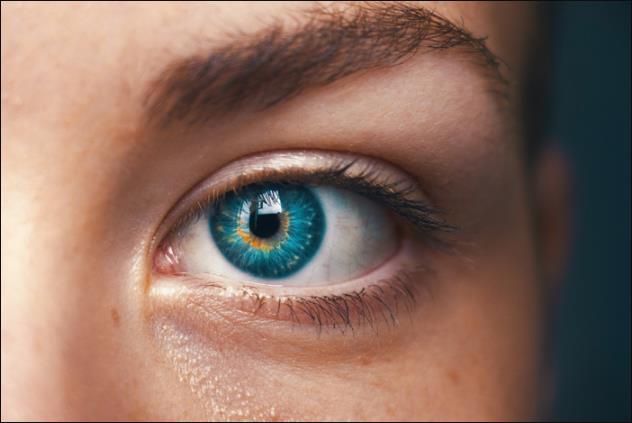伴随年龄的增长,大家的双眼不再像小时候那样明亮,由于大家的双眼比身体其他器官衰老得都要快。新研究发现,天天凝视红光3分钟可以有效改变视力,而且年长者的成效尤为显著。
A few minutes of looking into a deep red light could have a dramatic effect on preventing eyesight decline as we age, according to a new study published this week in The Journals of Gerontology.
依据本周发表在《老年学杂志》上的一项新研究,只须凝视深红色光几分钟,就能有效地预防视力衰退。
You dont need to use it for very long to start getting a strong result, said lead author Glen Jeffery, a professor of neuroscience at University College Londons Institute of Ophthalmology.
该研究的首席作者、伦敦大学学院眼科研究所神经科学系教授格伦·杰弗瑞说:“你不需要看很久红光,就能有立竿见影的成效。”
The science works, Jeffery said, because the light stimulates the health of mitochondria, which are like batteries in our cells.
杰弗瑞说,其科学原理在于红光可以增进线粒体的健康,线粒体就像大家身体细胞的电池。
mitochondria[ˌmaɪtokɑndrɪr]: n. 线粒体(mitochondrion的复数)
And because mitochondria are implicated in a broad range of diseases, insights like these could help lead to new treatments for diseases including Parkinsons and diabetes.
由于线粒体衰退牵涉到很多疾病,如此的发现可能能够帮助启发帕金森症和糖尿病等疾病的新疗法。

The study was small, a pilot study to test the concept. Researchers recruited 12 men and 12 women, whose ages ranged from 28 to 72. Each participant was given a small handheld flashlight that emitted a red light with a wavelength of 670 nanometers. That wavelength is toward the long end of the visible spectrum, and just short of an infrared wavelength, which tends to be invisible to the human eye.
这项研究是一个小型的试点项目,旨在测试这一定义。研究职员招募了12名男士和12名女人,他们的年龄在28岁到72岁之间。每位参与者都分到了一个手持的小手电筒,可以发出波长670纳米的红光。这种红光的波长接近可见光谱波长最长的一端,只有人眼一般看不见的红外线的波长才比它短。
They spent three minutes each day looking into the light over a period of two weeks.
在两周时间内,参与者天天花三分钟凝视红光。
The lights work on both cones and rods in the eye. Cones are photo receptor cells that detect color and work best in well-lit situations. Rods, which are much more plentiful, are retina cells that specialize in helping us see in dim light, according to the American Academy of Ophthalmology.
这种红光对双眼的视锥细胞和视杆细胞都产生了用途。依据美国眼科掌握,视锥细胞是可以知道颜色的感光细胞,在光线明亮的状况下最能发挥用途。数目庞大得多的视杆细胞是视网膜细胞,主要功能是帮大家在光线昏暗时看见东西。
Researchers measured the cone function in subjects eyes by havin them identify colored letters with low contrast. And they measured their eyes rod sensitivity by asking them to detect light signals in the dark.
研究职员通过让参与者辨别对比度低的有颜色的字母来衡量他们的视锥细胞功能,通过让参与者在黑暗中辨别光信号来衡量他们的视杆细胞功能。
There was a 14% improvement in the ability to see colors, or cone color contrast sensitivity, for the entire two dozen participants.
在24名参与者中,有14%的人辨认颜色的能力或视锥细胞颜色对比敏锐度提升了。
Improvement, however, was most significant in study participants over age 40. For those ages, cone color contrast sensitivity rose by 20% over the course of the study.
视力提升最显著的是40岁以上的参与者。在研究过程中,这一年龄段的人的视锥细胞颜色对比敏锐度上升了20%。
That age bracket also saw significant increases in rod threshold, which corresponds to the ability to see in low light. Study participants under 40 also experienced some improvement, but didnt see the same jump as older subjects. Younger eyes havent declined as much as older eyes.
该年龄段的人的视杆细胞功能也显著增强了,也就是在弱光环境下看见东西的能力。40岁以下的参与者也历程了视力改变,但没年长者那样显著。青年的双眼不像年长者的双眼衰退得那样紧急。
The retina ages faster than any other organ in your body, Jeffery said. From an evolutionary perspective, we fundamentally have never lived past 40.
杰弗瑞说:“视网膜衰老的速度比人体的其他器官都要快。从进化角度来讲,人类器官的用法寿命只有40年。”
Now, of course, we regularly live well beyond that age, and need ways to nurture the organs that for millennia have been the most likely to wear out earliest in life.
目前,普通人的寿命当然都会超越40岁,于是就需要各种方法来保养那些几千年来最早衰老的器官。
But more studies are needed to prove it helps.
不过还需要更多研究才能证明红光对视力有帮助。
Were all going to suffer from aging. So lets try to go gently if we can, Jeffery said.
杰弗瑞说:“大家都将遭到衰老的折磨。假如可以的话,让大家高雅地老去。”



